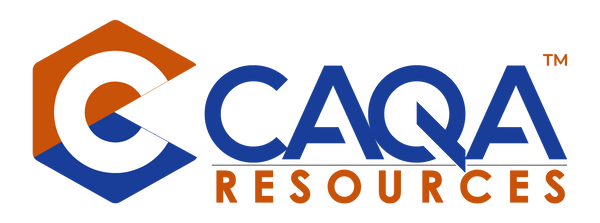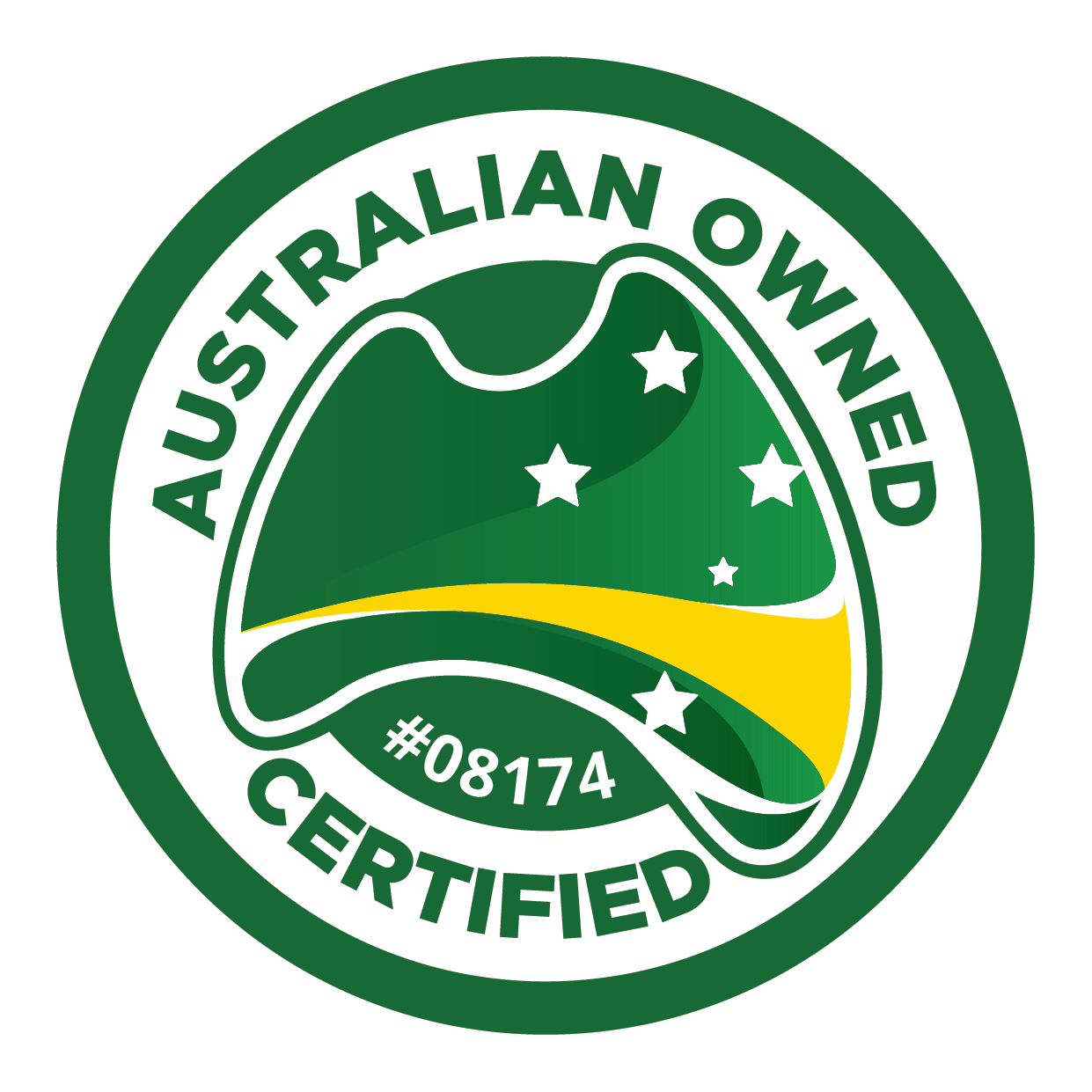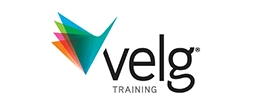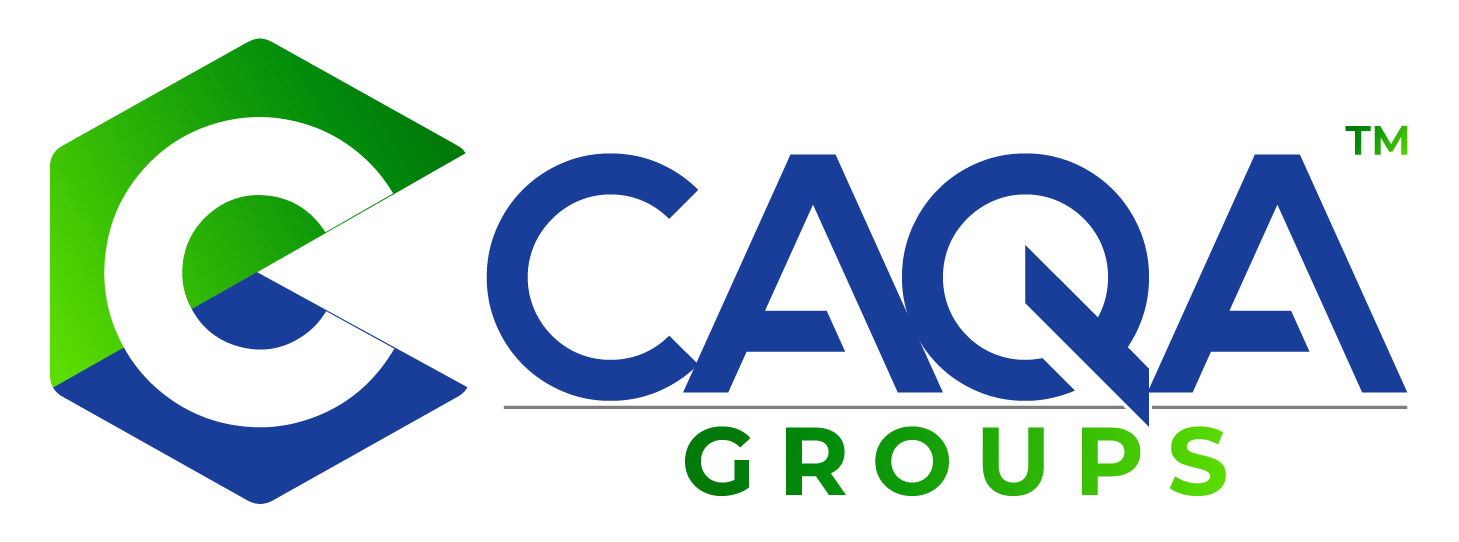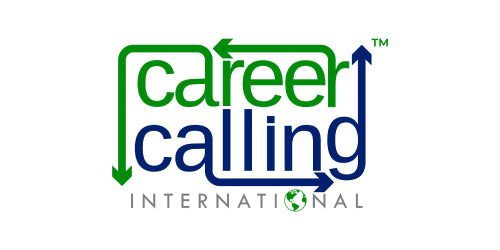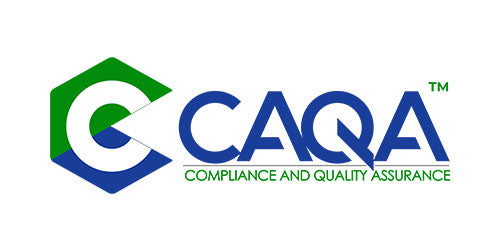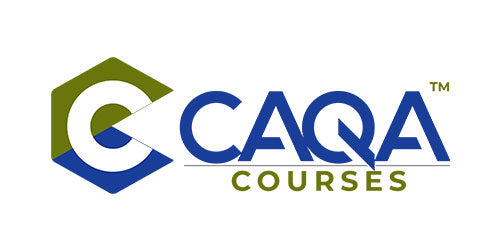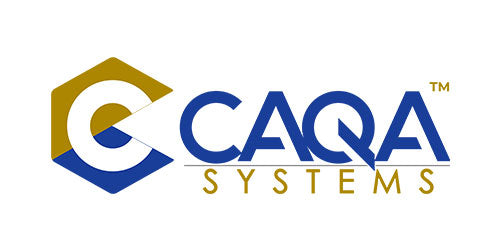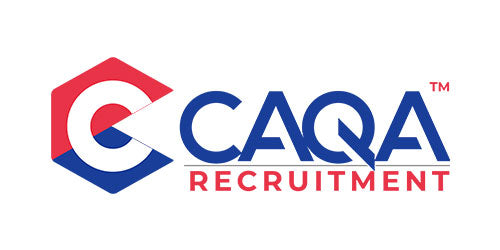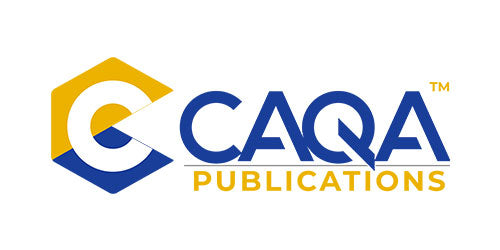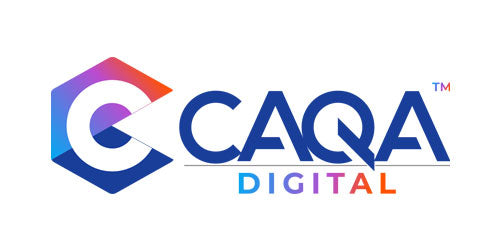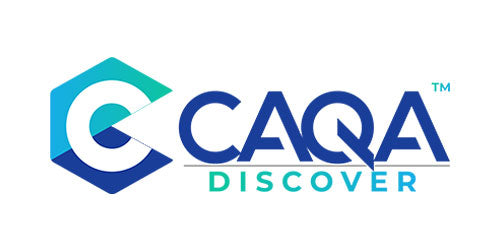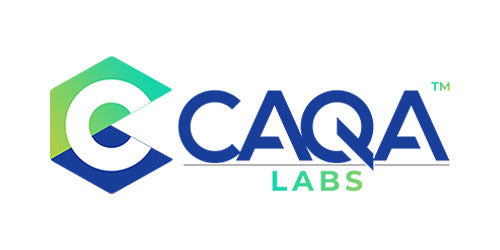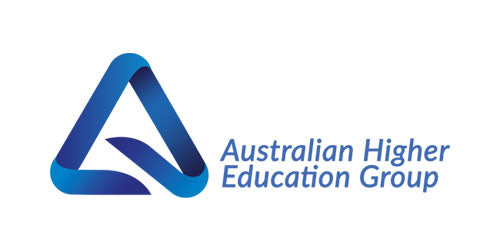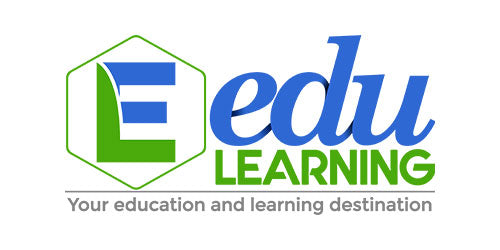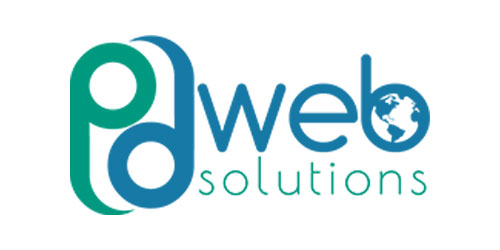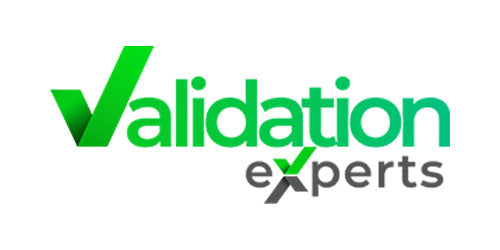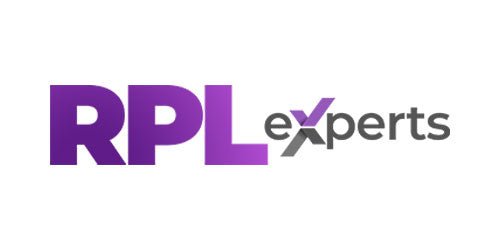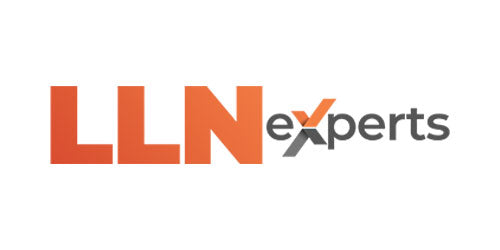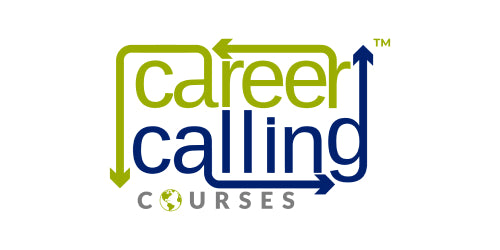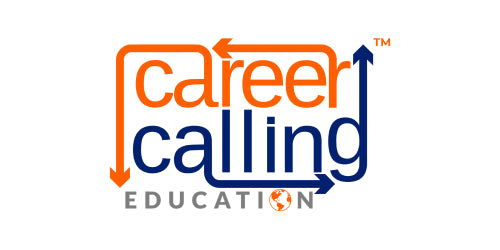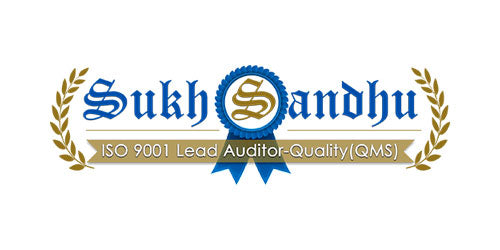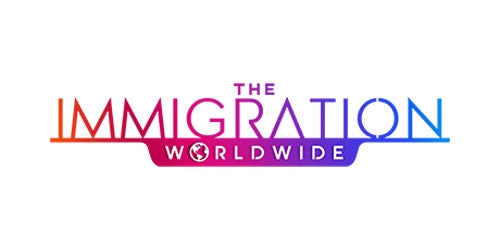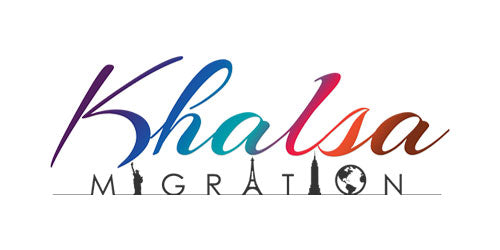The Australian Vocational Education and Training (VET) sector stands as a dynamic and essential pillar of the nation's economic infrastructure and social fabric. It is the engine room where practical skills meet theoretical knowledge, forging pathways for individuals into meaningful employment and driving the productivity of industries across the spectrum. At the very heart of this critical ecosystem operate the Registered Training Organisations (RTOs), entities entrusted with the profound responsibility of designing, delivering, and assessing nationally recognised qualifications. This responsibility extends far beyond simply imparting knowledge; it involves navigating a complex regulatory environment, responding adeptly to the ever-shifting demands of the modern workforce, and ensuring that every learner receives training and assessment services of the highest calibre. In such a demanding landscape, where quality is paramount and scrutiny is constant, the concept of organisational self-assurance has evolved dramatically. It is no longer sufficient for RTOs to adopt a reactive stance, primarily focused on meeting the minimum benchmarks set by regulatory bodies like the Australian Skills Quality Authority (ASQA) in anticipation of external audits. Instead, self-assurance represents a fundamental, proactive, and deeply embedded strategic imperative. It signifies an organisation-wide philosophy and operational commitment to rigorously monitoring, critically evaluating, and relentlessly improving every facet of operation as an intrinsic part of daily business. This involves the cultivation of robust internal systems, transparent processes, and a pervasive culture of quality that provides unwavering confidence – to the RTO's own leadership team, its dedicated staff, its valued learners, its crucial industry partners, and the regulators themselves – that the organisation not only meets but consistently strives to exceed quality benchmarks, manages its operations with integrity and effectiveness, and ultimately, delivers on its core promise of empowering individuals and strengthening industries. This profound shift towards genuine self-assurance is not merely about ticking boxes; it is about owning quality, fostering reflective practice at every level, harnessing the power of data and feedback to drive meaningful, sustainable improvements, and ultimately, securing the RTO's long-term viability and esteemed reputation within the VET sector.
The journey towards authentic self-assurance necessitates a departure from a compliance-centric paradigm that often characterised the VET sector in previous years. While adherence to the VET Quality Framework, particularly the Standards for RTOs 2015, remains an absolute baseline and non-negotiable requirement, an operational model driven solely by the cyclical pressure of impending audits can inadvertently foster a superficial, 'tick-box' mentality. This approach risks overlooking deeper, systemic issues that may hinder genuine quality enhancement or mask opportunities for innovation and improved learner outcomes. True self-assurance transcends this minimum threshold. It embodies a holistic and continuous commitment, woven into the very fabric of the RTO's identity and operational rhythm. It is about establishing an internal ecosystem where quality assurance is not an adjunct function performed by a select few but a shared responsibility embraced by everyone, from the CEO to the frontline trainer and administrator. This proactive stance involves the deliberate design and implementation of internal mechanisms that allow the RTO to constantly hold a mirror up to its own performance, identify areas of strength to be leveraged, and pinpoint weaknesses or potential risks before they escalate into significant problems or compliance breaches. It is fundamentally about building internal capability and confidence, demonstrating through consistent action and evidence that the RTO possesses the maturity, systems, and culture required to manage its quality obligations effectively without constant, intensive external oversight. ASQA's own evolving regulatory posture, increasingly emphasising RTOs' capacity for self-assurance, underscores this sector-wide shift, signalling a future where regulatory confidence is built upon the demonstrated effectiveness of an RTO's internal quality management rather than solely relying on the snapshot provided by periodic external audits. This transition demands a significant cultural and operational evolution within RTOs, moving towards a state of continuous readiness, reflective practice, and proactive quality ownership.
To navigate this transition successfully and embed self-assurance effectively, RTOs must build their framework upon a set of interconnected and mutually reinforcing pillars. These pillars provide a comprehensive structure, guiding the organisation in systematically managing quality, mitigating risks, and driving a cycle of perpetual improvement across all operational domains. While the specific implementation will vary based on an RTO's size, scope, and context, eight fundamental pillars form the bedrock of a robust self-assurance framework, ensuring a holistic approach to quality management. The first, and arguably most crucial, pillar is Visionary Leadership and Effective Governance. Without unwavering commitment, clear direction, and active championship from the highest echelons of the organisation – be it the CEO, Managing Director, Board of Directors, or governing council – any efforts to instil a pervasive culture of quality and self-assurance are unlikely to take root or achieve lasting impact. Leadership's role extends far beyond mere endorsement; it involves articulating a compelling vision for quality excellence that resonates throughout the entire organisation, consistently communicating the strategic importance of self-assurance, setting unambiguous expectations for performance and ethical conduct, and demonstrating a tangible, personal commitment to integrity and continuous improvement in all decision-making. Critically, leadership must foster a psychologically safe environment where staff at all levels feel empowered and encouraged to identify operational weaknesses, voice concerns about quality or compliance, propose innovative solutions, and engage in candid, critical reflection without fear of blame or negative repercussions. This requires not only rhetoric but also tangible action, including the strategic allocation of adequate resources – financial investment, dedicated human capital, appropriate technology, and protected time – to support the diverse activities inherent in self-assurance, such as comprehensive staff training, thorough internal audits, sophisticated data analysis systems, and potentially, dedicated quality assurance roles. Complementing strong leadership is the structure provided by effective governance. This encompasses clearly defined roles, responsibilities, and lines of accountability for quality outcomes mapped across the organisation. It necessitates the establishment, rigorous maintenance, and periodic review of comprehensive, accessible policies and procedures that are meticulously aligned with both the intricate requirements of the Standards for RTOs 2015 and the RTO's own overarching strategic goals. Key governance functions include the implementation of a proactive and systematic risk management framework, diligent financial oversight ensuring resources are used effectively and ethically, strategic planning processes that explicitly integrate quality objectives, and robust mechanisms for the governing body to actively oversee the RTO's performance, compliance status, and the overall effectiveness of its self-assurance framework. Transparent communication channels and clearly documented decision-making processes are vital components of this pillar, building internal trust and ensuring demonstrable accountability to all stakeholders.
The second pillar, providing the operational engine for self-assurance, is the implementation and maintenance of a Comprehensive Quality Management System (QMS). The QMS serves as the systematic, documented framework through which the RTO manages its core processes, ensures consistency in service delivery, proactively identifies and mitigates risks, and facilitates a structured approach to continuous improvement. While some RTOs may choose to adopt internationally recognised formal systems like ISO 9001, the fundamental requirement is a QMS that is demonstrably fit-for-purpose within the specific context of the RTO and the VET regulatory environment. An effective QMS provides a structured methodology for managing the entire learner lifecycle and associated operational functions, encompassing critical areas such as marketing and recruitment practices, enrolment procedures, the design and delivery of training programs, the development and implementation of assessment strategies, the provision of learner support services, mechanisms for industry consultation, human resource management including staff recruitment and development, and financial administration. This involves meticulously documenting key processes, defining clear quality standards and performance indicators for each, and establishing unambiguous workflows to ensure consistency and efficiency. A vital, integrated function of the QMS is the proactive and systematic identification, rigorous assessment, diligent management, and ongoing monitoring of risks that could potentially impact training quality, regulatory compliance, learner welfare, data security, financial stability, or overall business continuity. This typically involves maintaining dynamic risk registers, developing and implementing effective mitigation strategies, assigning ownership for risk controls, and regularly reviewing the effectiveness of these measures. Central to the QMS's role in self-assurance are regular, systematic internal audits. These audits, planned based on risk assessment and scheduled to cover all aspects of the Standards for RTOs and the RTO's own internal policies and procedures over a defined cycle (e.g., annually or biannually), must be conducted by appropriately trained personnel, independent of the area being audited, where possible. Internal audits provide objective, evidence-based insights into operational effectiveness, adherence to procedures, and compliance status. The documented findings from these audits, including identified non-compliances or areas for improvement, must feed directly into a formal corrective and preventive action (CAPA) process, ensuring that root causes are addressed, and tangible improvements are implemented and verified. Furthermore, periodic management reviews of the QMS itself are essential. These high-level reviews, typically involving senior leadership, assess the ongoing suitability, adequacy, and effectiveness of the entire quality system in achieving the RTO's quality objectives, considering inputs like audit results, feedback data, performance metrics, and changes in the operating environment. Finally, an effective QMS inherently embeds a philosophy of continuous improvement, often operationalised through cycles like Plan-Do-Check-Act (PDCA). This involves meticulously planning training delivery, assessment, or improvement initiatives (Plan), implementing them as planned (Do), systematically checking performance against established standards and objectives using data from audits, feedback, and performance indicators (Check), and then acting on the findings to make necessary adjustments, address shortcomings, and implement further enhancements (Act), thus driving an ongoing spiral of refinement and quality uplift.
The third essential pillar focuses squarely on Meaningful Learner Engagement and Holistic Support, recognising that learners are the raison d'être of any RTO. Ensuring their needs are accurately identified, their voices are actively sought and genuinely heard, and they receive appropriate and timely support throughout their entire learning journey is absolutely fundamental not only to delivering high-quality educational experiences but also to the very essence of self-assurance. This pillar begins even before enrolment, demanding the provision of clear, accurate, comprehensive, and easily accessible information to prospective learners, as explicitly required by the Standards for RTOs. This includes detailed descriptions of courses, outlining learning outcomes, delivery modes, duration, and assessment requirements; transparent information regarding all fees, charges, and potential refund conditions; clear articulation of the RTO's obligations and the learner's rights and responsibilities; and readily available details about the range of support services offered and the processes for accessing them, including complaints and appeals mechanisms. Such transparency builds crucial trust from the outset and empowers learners to make informed choices about their educational pathways. Beyond information provision, self-assured RTOs implement systematic processes to identify the individual needs of learners upon enrolment, including language, literacy, and numeracy (LLN) requirements, potential learning barriers, or needs for reasonable adjustments. Based on this identification, RTOs must provide, or facilitate access to, a spectrum of appropriate support services tailored to foster learner success and well-being. This support can encompass academic assistance, such as targeted LLN support, study skills workshops, or tutoring; welfare support, potentially including referrals to external counselling services, disability support liaison, or guidance on financial assistance; and career development advice, helping learners connect their training to future employment opportunities. Proactively identifying needs and responding effectively with tailored support significantly enhances learner retention, progression, and overall achievement. A cornerstone of this pillar is the establishment of robust and multi-faceted feedback mechanisms. Self-assured RTOs actively solicit, systematically analyse, and demonstrably act upon feedback received from learners throughout their engagement with the RTO. This extends far beyond reliance solely on mandated tools like the Quality Indicators Learner Questionnaire. It involves employing a diverse range of methods, such as regular pulse checks or informal check-ins by trainers, structured mid-course feedback sessions, online suggestion forums, learner focus groups, and ensuring a highly visible, accessible, and fair complaints and appeals process. The critical element is not just collecting feedback but demonstrating a closed-loop process: systematically collating and analysing the feedback received, identifying trends and areas for improvement, developing action plans to address concerns, implementing changes to training delivery, assessment practices, or support services, and, crucially, communicating back to learners how their input has been valued and utilised to effect positive change. This reinforces the value of their contribution and fosters a genuine partnership in quality improvement. Furthermore, monitoring learner progress through regular assessment feedback, tracking engagement levels, and identifying learners at risk of disengagement or non-completion allows for timely intervention and targeted support, further contributing to positive outcomes and demonstrating a proactive commitment to learner success.
Complementing the focus on learners is the fourth pillar: Proactive and Strategic Industry Engagement. Given that the primary purpose of VET is to equip individuals with skills directly relevant to workplace requirements, forging and maintaining deep, meaningful, and ongoing relationships with relevant industry stakeholders is not merely desirable but an indispensable component of a robust self-assurance framework. This engagement ensures that the RTO's training and assessment strategies, resources, and practices remain current, reflect contemporary industry standards and technologies, and ultimately produce graduates who possess the specific competencies that employers genuinely need. Effective industry engagement must be systematic and planned, moving beyond ad-hoc conversations. RTOs need documented processes for regularly consulting with a representative range of industry stakeholders, which may include individual employers (large and small), employer associations, industry peak bodies, unions, Skills Service Organisations, and relevant licensing or regulatory bodies. This consultation should actively inform the development, validation, and continuous review of the RTO's Training and Assessment Strategies (TAS) for each qualification or unit of competency on its scope. It ensures that the chosen delivery methods, learning resources, assessment tools, and required equipment accurately reflect current workplace practices and meet the specific skill requirements articulated within the relevant Training Packages or accredited courses. A critical aspect of industry engagement mandated by the Standards is its role in assessment validation. Involving authenticated industry experts in the systematic validation of assessment tools before they are used (pre-use validation) and the review of assessment judgements after assessment (post-use validation or moderation) is vital. This ensures that assessment methods are not only technically compliant but also genuinely reflect the performance standards expected in the actual workplace, thereby guaranteeing the validity and reliability of competency judgements. Beyond compliance, proactive engagement helps RTOs stay ahead of the curve by identifying emerging skills gaps, understanding future industry trends driven by technological advancements or changing market conditions, and anticipating evolving workforce development needs. This foresight allows RTOs to adapt their program offerings, develop new niche qualifications, or integrate emerging skills into existing programs, thereby ensuring their continued relevance and value proposition to both learners and industry. Establishing effective feedback loops is also crucial. This involves systematically gathering feedback from employers regarding the quality and job-readiness of the RTO's graduates, the effectiveness of the training provided in meeting workplace needs, and the overall satisfaction with the RTO's engagement processes. While the mandatory Quality Indicators Employer Questionnaire provides one data point, deeper engagement through employer focus groups, structured surveys tailored to specific industry sectors, and regular dialogue with partner employers can yield richer, more actionable insights for continuous improvement. Furthermore, strong industry links are instrumental in facilitating high-quality, relevant work placements or structured workplace learning opportunities for learners, significantly enhancing their practical skills and employability. These partnerships can also manifest in other valuable ways, such as industry guest speakers enriching classroom learning, collaborative development of training resources, donations of industry-standard equipment, or the formation of active Industry Advisory Committees that provide ongoing strategic guidance to the RTO.
The fifth pillar addresses the critical human element: Ensuring Staff Capability, Currency, and Professional Development. Ultimately, the quality of the training and assessment delivered by an RTO rests squarely on the shoulders of its trainers, assessors, and support staff. Their competence, their up-to-date knowledge of both industry practices and VET pedagogy, and their commitment to quality are paramount. Therefore, a core tenet of self-assurance is investing strategically in attracting, developing, and retaining a high-calibre workforce equipped to meet the rigorous demands of the sector. This begins with robust recruitment and induction processes. RTOs must have meticulous procedures to verify that all trainers and assessors possess the required credentials, including the mandated Training and Education (TAE) qualifications or equivalent, as well as demonstrating deep vocational competence and broad, current industry skills directly relevant to the training and assessment they will provide. Verification methods should be rigorous, going beyond simply sighting qualifications to potentially include skills tests, interviews focusing on industry experience, and thorough reference checks. Equally important is a comprehensive induction process that not only covers organisational policies and procedures but also explicitly introduces new staff to the RTO's quality culture, its self-assurance framework, and their specific roles and responsibilities within it. However, capability is not static. The VET sector and the industries it serves are in constant flux. Therefore, maintaining currency is an ongoing obligation. RTOs must implement and monitor strategies to ensure their staff continuously maintain both their industry currency – through sustained engagement with their vocational field via work, professional networks, industry events, or relevant publications – and their VET currency – staying abreast of current best practices in training, assessment, learning theories, regulatory changes, and the effective use of educational technologies. This requires organisational support and structured opportunities. Central to this pillar is a commitment to ongoing, relevant, and impactful professional development (PD). Self-assured RTOs view PD not as an optional extra or a mere compliance requirement but as a strategic investment in their most valuable asset. This involves developing systematic PD plans, often linked to individual performance reviews and organisational quality goals, offering a diverse range of learning opportunities (e.g., internal workshops on assessment validation or LLN support, external conferences, enrolment in further qualifications, participation in communities of practice, mentoring programs), meticulously recording all PD activities undertaken by staff, and, critically, evaluating the effectiveness of PD in enhancing skills, knowledge, and practice. Performance management systems should also be aligned with the principles of self-assurance. Performance reviews should explicitly include discussion and evaluation of staff members' adherence to quality standards, compliance with policies and procedures, active participation in self-assurance activities like internal audits or validation sessions, contribution to continuous improvement initiatives, and commitment to maintaining their required currency. These processes should focus on constructive feedback, identifying development needs, and providing support for improvement, rather than being purely punitive. Ultimately, the goal is to foster a vibrant professional learning culture within the RTO, where staff feel valued, supported in their growth, empowered to share expertise and best practices, encouraged to reflect critically on their own teaching and assessment strategies, and motivated to contribute actively to the organisation's collective pursuit of quality excellence.
The sixth pillar, demanding specific and rigorous attention due to its centrality in the VET system and regulatory focus, is Rigorous and Valid Assessment Practices. Assessment is the critical process through which an RTO determines whether a learner has achieved the required competencies outlined in a Training Package or accredited course. Ensuring the quality, fairness, and validity of assessment is, therefore, non-negotiable and a cornerstone of demonstrating self-assurance. This pillar requires RTOs to establish and meticulously maintain a comprehensive assessment system founded on the accepted principles of assessment: validity (assessment accurately assesses the required skills and knowledge), reliability (assessment is consistent and reproducible), flexibility (assessment methods cater to diverse learner needs and contexts, where appropriate), and fairness (assessment processes do not disadvantage any learner and provide opportunities for reasonable adjustment and appeal). A fifth principle often included is sufficiency, ensuring enough evidence is gathered to make a confident judgment. Building this system involves careful design and documentation of assessment strategies for each qualification, clearly outlining the methods to be used (e.g., observation, questioning, projects, portfolios, third-party reports), the timing and context of assessment, and the resources required. The development of individual assessment tools (e.g., checklists, question banks, project briefs, RPL kits) must be undertaken by individuals with expertise in both the subject matter and assessment design, ensuring clear instructions for learners and assessors, explicit mapping to the units of competency, and defined criteria for judging performance (benchmarks). A critical element of self-assurance in assessment is systematic validation. This involves a quality review process to ensure assessment tools and practices are valid and fit-for-purpose before they are implemented with learners (pre-use validation). It also requires regular, scheduled reviews of assessment judgements after assessment has occurred (post-use validation or moderation) involving relevant staff and industry experts. These validation activities systematically check that assessment practices are producing valid, reliable, sufficient, current, and authentic evidence, enabling assessors to make consistent and accurate competency judgements aligned with Training Package requirements and industry expectations. Findings from validation activities must be documented, analysed, and used to inform continuous improvement of assessment tools, strategies, and assessor practices. The RTO must also have clear, fair, and transparent processes for managing Recognition of Prior Learning (RPL) applications, ensuring sufficient, valid, authentic, and current evidence is gathered and assessed against the unit requirements. Furthermore, robust mechanisms for providing timely and constructive feedback to learners on their assessment performance, along with accessible and equitable processes for handling assessment appeals, are essential components of fair assessment practice and demonstrate a commitment to learner rights. Ensuring the consistency of assessment judgements across different assessors and locations, often achieved through moderation activities and professional development for assessors, is another vital aspect of maintaining the integrity of the assessment system and demonstrating self-assurance in this critical domain.
The seventh pillar, underpinning the RTO's ability to deliver quality over the long term, is Sound Financial Management and Organisational Viability. While sometimes viewed separately from academic quality, the financial health and responsible management of an RTO are intrinsically linked to its capacity to consistently deliver high-quality training and assessment and meet its regulatory obligations. Self-assurance, therefore, extends to demonstrating prudent financial stewardship and ensuring the organisation's ongoing viability. This involves establishing and maintaining robust financial management systems and processes, including accurate budgeting, diligent expenditure control, transparent fee management, effective cash flow monitoring, and regular financial reporting to the governing body. RTO leadership must ensure that financial planning adequately supports quality objectives, allocating sufficient budget for essential resources such as qualified staff, appropriate facilities and equipment, necessary learning materials, investment in technology (like Student Management Systems and Learning Management Systems), staff professional development, and the resources needed to conduct self-assurance activities like internal audits and validation. Transparency in financial matters, particularly concerning fees and charges levied on learners, is crucial and mandated by the Standards. RTOs must provide clear, accurate, and comprehensive information about all costs associated with enrolment and participation before a learner commits, along with fair and clearly documented policies regarding payments, refunds, and the protection of prepaid fees (where applicable, such as through tuition assurance schemes). Compliance with the financial requirements stipulated in government funding contracts (e.g., state-based funding agreements like Skills First in Victoria or Smart and Skilled in NSW) is another critical aspect, requiring meticulous record-keeping and adherence to specific reporting and acquittal processes. Effective risk management must also encompass financial risks, such as over-reliance on a single funding source, fluctuations in enrolment numbers, unexpected increases in operating costs, or potential bad debts. Identifying these risks and implementing mitigation strategies is vital for stability. Ultimately, demonstrating sound financial management provides confidence to regulators, funding bodies, learners, and staff that the RTO is a stable, well-managed organisation capable of meeting its commitments and sustaining its operations into the future. This financial viability is not just about survival; it's about having the necessary foundation to consistently invest in and deliver the quality outcomes expected by all stakeholders, thereby forming an integral part of the overall self-assurance picture.
The eighth and final pillar, increasingly critical in our data-driven and digitally interconnected world, is Effective Information Management and Security. RTOs handle vast amounts of sensitive information relating to learners, staff, finances, and operations. The ability to manage this information accurately, securely, efficiently, and ethically is fundamental to operational effectiveness, compliance, and demonstrating self-assurance. This pillar encompasses the entire lifecycle of information within the RTO, from collection and recording through to storage, usage, reporting, archiving, and eventual disposal. Accurate and complete data collection is paramount, particularly concerning learner enrolment details, participation records, assessment outcomes, and completion data. This data forms the basis for mandatory reporting obligations, such as providing accurate AVETMISS (Australian Vocational Education and Training Management Information Statistical Standard) data to the National Centre for Vocational Education Research (NCVER), which is crucial for national VET statistics and often linked to funding eligibility. Robust systems, typically integrated within a quality Student Management System (SMS), are needed to ensure data integrity and minimise errors. Secure storage of information, whether in physical or digital formats, is vital to protect confidentiality and prevent unauthorised access. RTOs must comply with the requirements of the Australian Privacy Principles (APPs) under the Privacy Act 1988 (Cth), ensuring personal information is collected lawfully, used only for specified purposes, stored securely, and handled transparently according to a clearly communicated privacy policy. This includes implementing appropriate technical security measures (e.g., firewalls, encryption, access controls) and administrative procedures (e.g., staff training on privacy obligations, secure disposal of records). Effective information management also means ensuring that relevant information is accessible to those who need it for legitimate purposes, such as trainers accessing learner progress data or managers accessing performance reports. Efficient systems facilitate timely access and reduce administrative burden. Beyond compliance and security, the effective use of information is a key enabler of self-assurance and continuous improvement. RTOs should leverage their collected data – from learner demographics and progression rates to feedback surveys and assessment results – to conduct meaningful analysis. This analysis can reveal trends, identify areas of concern (e.g., high withdrawal rates in a specific unit, inconsistent assessment outcomes between trainers), measure the impact of quality initiatives, and provide an evidence base for informed decision-making and strategic planning. Clear policies regarding record retention, outlining how long different types of records must be kept to meet regulatory and business needs, are also essential. In an era of increasing cyber threats, robust cybersecurity practices to protect systems and data from malware, phishing attacks, and data breaches are an integral part of responsible information management and demonstrating organisational resilience. Effectively managing information is, therefore, not just an administrative necessity but a strategic capability that underpins compliance, protects stakeholders, enables data-driven improvement, and provides tangible evidence of an RTO's commitment to operating professionally and ethically.
Implementing a comprehensive self-assurance framework built upon these eight pillars is not a one-off project but an ongoing journey that requires deliberate strategies, appropriate tools, and, most importantly, a fundamental shift in organisational culture. Cultivating this culture is perhaps the most critical and often the most challenging aspect. It demands a conscious move away from a reactive, compliance-driven, or potentially 'blame' culture towards one where quality is universally understood as a shared value and collective responsibility. This cultural transformation is spearheaded by leadership through consistent communication emphasising the 'why' behind self-assurance – its benefits for learners, staff, and the organisation's sustainability – alongside the 'how'. It necessitates genuine staff involvement and empowerment, engaging personnel at all levels in the development, review, and refinement of policies, procedures, and quality initiatives. When staff feel ownership and believe their contributions are valued, they are more likely to embrace proactive quality management. Transparency is another key cultural element; openly sharing relevant data, internal audit findings (both positive and negative), external review outcomes, and resulting improvement plans fosters trust and reinforces accountability. Celebrating successes, acknowledging efforts related to quality improvement, and recognising innovation encourages positive engagement. Crucially, fostering a 'no-blame' environment where errors, near misses, or identified non-compliances are viewed not as failures to be punished but as valuable opportunities for systemic learning and improvement is essential for encouraging open reporting and proactive problem-solving. Alongside culture, data-driven decision-making is vital. Self-assurance cannot rely on anecdotes or assumptions; it must be grounded in objective evidence. RTOs need robust, reliable systems and processes for systematically collecting, meticulously analysing, and effectively interpreting data from a diverse array of sources. This includes quantitative data like enrolment statistics, progression benchmarks, completion rates, assessment outcomes, LLN assessment results, and AVETMISS data, as well as qualitative data derived from learner feedback surveys, employer satisfaction questionnaires, trainer reflections, complaints registers, appeals documentation, internal audit reports, and validation records. The real value lies not just in collection but in analysis – identifying patterns, benchmarking performance, pinpointing systemic weaknesses or areas of high performance, measuring the tangible impact of implemented improvement strategies, and using these insights to inform operational adjustments and strategic planning priorities. Technology can significantly enable and enhance self-assurance capabilities. Integrated Student Management Systems (SMS) and Learning Management Systems (LMS) can centralise learner data, automate record-keeping, track progress, manage compliance reporting, facilitate communication, host online learning resources, and even incorporate feedback mechanisms. Dedicated internal audit software can streamline the audit process, manage evidence collection, track corrective actions, and generate reports. Data analytics platforms or even well-designed spreadsheets can help visualise trends, interpret complex data sets, and support evidence-based reporting. The key is to leverage technology strategically to support processes and provide insights, rather than allowing it to dictate practice or become an end in itself. Systematic internal audits and reviews remain a cornerstone practice. A risk-based internal audit schedule ensures that all aspects of the Standards for RTOs and the RTO's own QMS are reviewed over a defined period, with higher-risk areas audited more frequently. Rigorous follow-up on audit findings through a formal corrective and preventive action process is critical to ensure that identified issues are effectively resolved and systemic improvements are embedded. Finally, integrating proactive risk management into all facets of operational planning and review is essential. This involves not only identifying potential threats but also assessing their likelihood and potential impact, implementing appropriate controls or mitigation strategies, and continuously monitoring the effectiveness of these measures through the QMS and governance structures.
The profound benefits realised by RTOs that genuinely embrace and embed a comprehensive self-assurance framework extend far beyond merely satisfying regulatory requirements or achieving a smoother audit experience. These advantages contribute directly and significantly to the organisation's overall health, market standing, and long-term success. Perhaps the most visible benefit is an enhanced reputation and heightened credibility within the VET sector and the broader community. RTOs that can demonstrably evidence their commitment to quality through proactive self-monitoring, transparent reporting, and a culture of continuous improvement naturally build stronger reputations. This fosters deep trust among prospective and current learners, who are more likely to choose and recommend a provider known for excellence. Employers increasingly value graduates from reputable RTOs and are more inclined to engage in partnerships, offer work placements, and provide valuable feedback when they have confidence in the RTO's quality commitment. Funding bodies, whether government agencies or industry clients, view well-governed, self-assured RTOs as lower-risk investments and more reliable partners for achieving workforce development goals. Even regulators like ASQA are more likely to adopt a relationship based on earned confidence, potentially leading to less intensive regulatory oversight for RTOs that consistently demonstrate effective self-assurance. This strong reputation becomes a powerful differentiator and a significant competitive advantage in a crowded marketplace. Directly linked to this is the achievement of improved learner outcomes and experiences. A relentless focus on understanding learner needs, providing tailored support, delivering relevant and engaging training, ensuring fair and valid assessment, and actively responding to learner feedback inevitably translates into a more positive and successful learning journey. This manifests in tangible results such as higher course completion rates, demonstrably improved skill acquisition aligned with industry needs, greater overall learner satisfaction with the training experience, and, ultimately, increased likelihood of learners achieving their desired goals, whether securing meaningful employment, gaining a promotion, or progressing to further education. Successful and satisfied learners become powerful advocates, further enhancing the RTO's reputation through positive word-of-mouth referrals. Furthermore, effective self-assurance practices lead to increased operational efficiency and productivity. Clearly defined processes documented within the QMS, unambiguous roles and responsibilities, proactive risk mitigation strategies, and data-informed decision-making all contribute to smoother, more streamlined operations. By systematically identifying and eliminating process bottlenecks, reducing errors and the need for costly rework arising from non-compliance, optimising the allocation of human and financial resources, and streamlining administrative tasks, self-assurance frees up valuable time and resources. This allows staff to focus more effectively on the core mission of delivering high-quality training, assessment, and learner support, thereby boosting overall productivity and organisational effectiveness. Perhaps one of the most profound benefits is the cultivation of a genuine culture of continuous improvement. Self-assurance moves quality enhancement from being a reactive, intermittent project, often triggered by an external audit, to becoming an ongoing, embedded, systematic process involving reflection and action at all levels of the organisation. This fosters a dynamic environment that encourages innovation, embraces adaptability, promotes collaborative problem-solving, and nurtures a collective commitment to striving for excellence. RTOs with this embedded culture are far better equipped to respond proactively and effectively to the inevitable changes in Training Packages, industry demands, technological advancements, and regulatory expectations. This inherent adaptability and focus on ongoing enhancement contribute directly to enhanced competitiveness and long-term sustainability. In an increasingly discerning and competitive VET market, RTOs that can clearly differentiate themselves based on demonstrable quality, learner success, and strong industry partnerships gain a significant edge. They are better positioned to attract discerning learners, secure valuable industry collaborations, successfully tender for government funding contracts, and navigate sector reforms with greater resilience. This combination of operational robustness, market appeal, and adaptability significantly strengthens the RTO's financial viability and secures its capacity to thrive sustainably into the future. Finally, while self-assurance requires a significant internal commitment of effort and resources, it ultimately leads to a reduced regulatory burden and mitigated compliance risk. RTOs that can confidently demonstrate effective internal quality monitoring and control systems are far less likely to face major non-compliance findings during external audits conducted by ASQA or state regulators. Providing robust evidence of proactive self-assessment, risk management, and continuous improvement can lead to smoother, less adversarial audit experiences and potentially result in regulators adopting a less frequent or less intensive monitoring approach over time. Most importantly, genuine self-assurance significantly minimises the substantial risks associated with major compliance breaches, including potential sanctions like scope restrictions or registration cancellation, severe reputational damage, loss of funding, and the significant direct and indirect costs associated with large-scale rectification efforts.
Despite the compelling benefits, the path to embedding a mature self-assurance framework is not without its potential challenges, particularly for smaller RTOs or those transitioning from a more traditional compliance-focused model. Resource constraints often present a significant hurdle. Dedicating sufficient financial resources, allocating protected staff time away from direct delivery or administrative duties, and potentially investing in new systems or expertise specifically for self-assurance activities can be difficult, especially when faced with tight budgets or competing operational priorities. Overcoming this requires strong leadership commitment to prioritise quality and strategically allocate resources, potentially starting with a phased implementation focusing on the highest risk areas. Another common challenge is resistance to change. Moving from established routines and a potentially siloed approach to a more integrated, transparent, and reflective culture can encounter resistance from staff who may perceive self-assurance activities as burdensome additional bureaucracy, feel uncomfortable with increased scrutiny, or lack understanding of the underlying benefits. Addressing this requires clear, consistent communication from leadership about the purpose and value of self-assurance, extensive staff engagement and consultation in designing and implementing processes, providing adequate training and support, and celebrating early wins to build momentum and demonstrate positive outcomes. A lack of internal expertise can also be a barrier. Staff may not possess the necessary skills or experience in critical areas such as conducting rigorous internal audits, designing valid assessment tools, performing sophisticated data analysis, implementing formal risk management frameworks, or managing a comprehensive QMS. RTOs can address this through targeted investment in professional development for existing staff, recruiting individuals with specific quality assurance skills, collaborating with other RTOs through networks to share expertise, or engaging external consultants for initial guidance and system development, with a clear plan for building internal capacity over time. The potential for system complexity is another pitfall. In an effort to be comprehensive, RTOs might inadvertently design quality management systems or self-assurance processes that are overly complex, bureaucratic, and difficult for staff to understand or use effectively. The key is to focus on designing systems that are fit-for-purpose, streamlined, user-friendly, and genuinely add value, rather than creating unnecessary red tape. Simplicity and practicality should guide system design. Finally, the challenge of data management and interpretation looms large. While collecting data is essential, RTOs can easily become overwhelmed by vast amounts of information without having the clear strategies, analytical tools, or skilled personnel needed to interpret it meaningfully and translate it into actionable insights. It is crucial to define key performance indicators, focus data collection efforts on what truly matters for monitoring quality and compliance, invest in appropriate tools for analysis and reporting (which need not be overly expensive), and develop staff capability in data literacy. Overcoming these challenges requires strategic planning, persistent effort, strong leadership, a commitment to capacity building, and a willingness to adapt and refine the approach based on ongoing experience and feedback.
In conclusion, navigating the intricate and perpetually evolving landscape of Australian vocational education and training demands far more from Registered Training Organisations than simply meeting baseline regulatory requirements. Self-assurance, built upon the robust and interconnected pillars of Visionary Leadership and Effective Governance, a Comprehensive Quality Management System, Meaningful Learner Engagement and Holistic Support, Proactive and Strategic Industry Engagement, Ensuring Staff Capability, Currency, and Professional Development, Rigorous and Valid Assessment Practices, Sound Financial Management and Organisational Viability, and Effective Information Management and Security, has transcended its former status as a compliance buzzword to become the indispensable strategic cornerstone for achieving genuine quality, fostering stakeholder confidence, and ensuring long-term organisational success. It signifies a profound institutional maturation, a deliberate shift from a posture of reactivity, often driven by external audit cycles, to one of proactive ownership, critical self-reflection, and an unwavering, organisation-wide commitment to continuous improvement embedded within the daily operational rhythm. By systematically implementing strategies grounded in these eight pillars, cultivating a pervasive culture where quality is a shared value and responsibility, harnessing the power of evidence through data-driven decision making, and consistently acting upon insights gained from rigorous self-assessment, RTOs move decisively beyond the limitations of a mere compliance mindset. They actively construct an internal ecosystem capable of identifying potential risks before they manifest, addressing operational weaknesses with targeted interventions, leveraging areas of strength, and capitalising on opportunities for innovation and enhancement in training delivery, assessment practices, and learner support. The resultant benefits are not abstract ideals but tangible outcomes: a significantly enhanced reputation that builds trust and attracts stakeholders, demonstrably improved learning experiences and success rates for learners, streamlined operations leading to greater efficiency and productivity, an adaptive and resilient organisational culture intrinsically geared towards ongoing improvement, a stronger competitive position within the VET marketplace, and ultimately, a more sustainable and viable future for the organisation, coupled with a reduced burden of regulatory intervention. While the journey of embedding authentic self-assurance presents undeniable challenges related to resources, culture change, and capability development, the imperative to undertake this transformation is clear. In a sector defined by constant change and escalating expectations, those RTOs that wholeheartedly embrace and integrate the principles of self-assurance across their operations will not merely survive; they will be the institutions best equipped to navigate future complexities, consistently deliver exceptional value to their learners and industry partners, maintain the confidence of regulators, and ultimately, thrive as leaders in shaping Australia's skilled workforce for generations to come. Self-assurance is, therefore, not just a framework for quality management; it is the essential foundation upon which the future success and enduring relevance of every RTO must be built.









